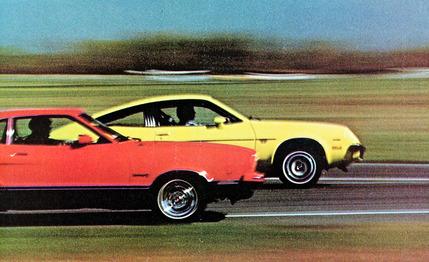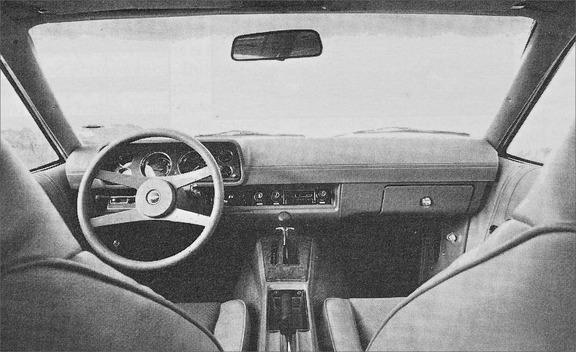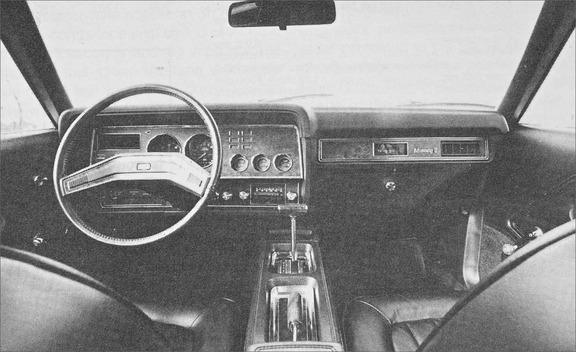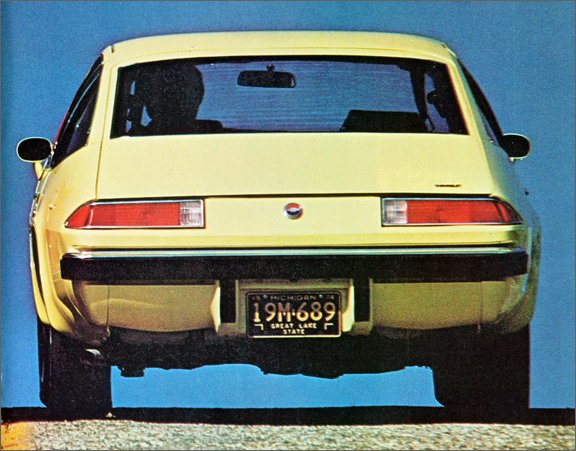
 Archived Comparison
Archived Comparison


Pony-car fans have more to be excited about today than they’ve had in 40 years—not only are both the Mustang GT and Camaro SS above the 400-hp threshold, but there’s even a horsepower war raging between the V-6 editions. Next week, we’ll post comparison tests between both the current eights and the sixes, but for now, enjoy this series of past encounters between two of Detroit’s most storied cars.
Oops. The ’70s were such a dreary time that we fell into a funk and forgot to compare the Mustang and Camaro for a full decade. What we did do, however, was pit a Mustang II against a Chevy Monza in this Toilet Bowl of sorts. The bellowing 302-cubic-inch (we’re going retro; there ain’t no liters in this house) V-8 in the Mustang was the more powerful of the two engines, with 129 screaming ponies just waiting for their chance to unleash a stonking 10.1-second hump to 60.
______________________________________
When Ford and Chevrolet put their ears to the ground, they both apparently hear the same hoofbeats. And if the Mustang II and Monza 2 + 2 are any indication, both companies respond by circling their wagons in the same direction. If you are looking for a 1975 sports car Detroit-style, these two compact coupes are your only choices. And though they are worlds apart visually and in terms of the corporate engineering preferences, the fundamental concepts behind them are so close that you'd think the product planners had been sifting each other's wastepaper.
Or could it be that for once they were listening to the demands of the car enthusiast? Both are compact and highly maneuverable coupes that transport two in first-class comfort. Both offer V-8 engines and taut suspensions for spirited driving yet provide a measure of utility with their hatchbacks and fold-down rear seats. On top of these basics are option lists that allow almost infinite variations between the lean machine and the opulent tourer. The Mustang II and the Monza are exactly the sort of sporting automobiles that we have been waiting for. The hard part is choosing between them, at least until you've driven them both under a wide variety of circumstances—which we've done for you.
Car and Driver tried to equip the test cars as an enthusiast would buy them yet keep them equal for comparison purposes. For the most part, this presented no problem. Both were ordered with V-8 engines (unfortunately the Monza V-8 is not available in California), power steering and brakes, limited-slip differentials, the best suspensions for handling and the largest available tires. Very likely, the serious driver would order his Monza with a four-speed transmission, but since the V-8 Mustang is automatic only, the Monza was dialed up that way too. And while the Monza is built with a 2.56 axle ratio as standard equipment, we specified the optional 2.93 to match against the Mustang's standard 3.00 gear. So there is no room for excuses. These two cars are as equal as the United Auto Workers can make them. It's Ford against Chevrolet, showdown time.


Above, the interior of Chevrolet's Monza 2+2. Below, the Ford Mustang II Mach I.


Both of the coupes borrow heavily from the subcompact sedans in their families. At the same time Ford was preparing the Mustang II for its 1974 model introduction, the Pinto was being re-engineered, so the two now share front and rear suspensions, brakes and much of the floor pan. While the Mustang II is an unmistakably quieter and more poised automobile than the Pinto, there remains a certain similarity in ride and handling between the two.
In the same fashion, a good bit of the Vega shows up in the Monza. The body structure below the beltline is so similar that both end up with exactly the same overall width. Both also share the same front suspension and steering geometry, although the pieces have been redesigned for the Monza. The brakes, however, are identical. Yet when you drive the Monza, you find that its Vega heritage has been completely camouflaged. The suspension doesn't bottom out, the rear axle doesn't hop over chatter-bumps and the Vega's pitching tendency is completely gone. While it may be technically accurate to consider the Monza a better Vega, that grossly understates the improvement.
Apparently the origin of the pieces used in building these cars has far less to do with the machines' ultimate personalities than the intentions of the engineers who designed them: The two coupes resemble nothing so much as the sporty cars of a few years ago—on a smaller scale, of course. The V-8-powered Mustang II is very much in the same mold as the old Mustang Mach I. You fit inside in the same way, propped up by a staunchly upright bucket seat, facing a large diameter steering wheel that is close to your chest. You view the world through the same sort of limited glass area and despite the compact external dimensions, the new Mach I feels vaguely ponderous just as the old one did. With its adjustable shock absorbers set in the firmest position, the latest Mustang moves over rough surfaces in the same old heavy-footed way—not nearly so harshly as the "competition suspension" of the old Boss Mustangs but close enough so that you'd recognize both of them as Fords.
The Monza does its part to perpetuate the Camaro theme: The bucket seats rake back at a suitably sporty angle, the steering wheel is small and connected to a very quick variable-ratio gear, the glass area is expansive and the car feels nimble (as do most small General Motors models). The Monza's exceptionally supple and well-controlled suspension and the fast power steering combine to make it feel smaller and more agile than the Mustang. Which is, for the most part, an illusion.


In truth, the two coupes are virtually identical in size. At 179.3 inches overall length, the Monza is 4.3 inches longer than the Mustang. The Ford counters with 4.8 inches of extra width, most of which shows up as additional hip room in the passenger compartment. But because of the way the door panels are shaped, the Monza has only a 1.5-inch deficit in shoulder room. Even so, some broad-shouldered drivers find the Monza's cockpit uncomfortably tight.
Comfort in the Mustang is greatly compromised by insufficient adjustment in the bucket seats. They don't slide back far enough to give you elbow room as you work the big steering wheel and the back rests have no adjustment for angle. As a $16 option, Chevrolet offers a two-position backrest on the Monza that is well worth its price. Chevrolet also offers cloth inserts for the seats at no additional cost, and these are a strong plus for comfort. Basic seat design differs considerably between the two cars. Those in the Mustang are broad and flat; the Monza provides more contour and therefore more lateral support. Rear seats in both cars are strictly for kids. Headroom and knee-room back there are inadequate for adults, even for trips around the block. These are strictly front-seat cars. Of the two, the Monza's interior is definitely preferable. The Mustang's driving position, particularly the lack of elbow room when the car is equipped with the optional between-the-seats console, make it a second choice.
Since these two cars have substantially the same dimensions, the Mustang's impression of greater size may be at least partially attributable to its greater weight: 3335 pounds compared to 3210 for the Monza. It is interesting to see how weight grows in proportion to the length of the option list. According to Ford, the basic V-6 Mach I bounces into this world at 2967 with all tanks filled. Add to that a 302 V-8 with automatic, 271 extra pounds; power steering, 42; power brakes, 12; larger fuel tank with fuel, 32; AM/FM stereo, eight; console, eight; heated rear glass and pivoting quarter windows, five; fold-down rear seat, 39; plus the other accessory groups and packages that make up the grand total. The Monza grows in the same way: To the 2673-pound base coupe add the 262 V-8, 280 pounds extra; automatic transmission, 17; power steering, 37; power brakes, nine; radio, six; plus all of the other little extras that find their way onto new cars.

